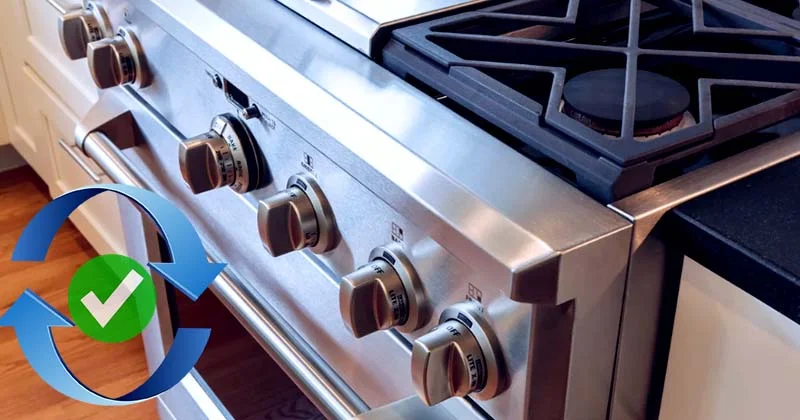If you’ve recently upgraded to a new electric stove and found yourself frustrated with the Sensi-Temp technology that constantly regulates the temperature of your burners than you’re not alone. Many users have experienced issues with this feature, leading them to seek ways to disable it.
Here, in this guide, we’ll explore what Sensi-Temp technology is, why some users dislike it and most importantly, how to effectively disable it on your newer stove.
Understanding Sensi-Temp Technology
What Is Sensi-Temp Technology?
Sensi-Temp technology, introduced in electric stoves starting from 2018, is a safety feature designed to prevent accidental fires. It achieves this by using sensors to monitor the temperature of your cookware. If the temperature becomes too high, the burner shuts off until it reaches a safe level again.
While this feature has good intentions, it has left many users frustrated due to its sensitivity and requirements for flat cookware.
The Frustration with Sensi-Temp
For some users, Sensi-Temp stoves have proven to be more of a hassle than a benefit. GE, which is known for implementing this technology, suggests that for the burners to work correctly, the sensors need to remain clean, and cookware must be completely flat for proper sensor contact. This often necessitates the replacement of existing cookware, leading to added expenses.
Disabling Sensi-Temp: Your Options
If you’re fed up with Sensi-Temp technology disrupting your cooking experience, there are two primary solutions:
- Replacing Burners with Traditional Ones:You can opt to replace the Sensi-Temp burners with traditional burners that lack the temperature sensor. Some users have been told by manufacturers that this is impossible, but it’s not the case. The newer Sensi-Temp burners are designed to be plug-compatible with traditional burners. To replace them, you simply unplug the Sensi-Temp burner and plug in the traditional one.
- Selecting the Right Replacement Burners: When choosing replacement burners, it’s crucial to match the specifications of your original Sensi-Temp burners. This includes the number of turns, wattage and size. It’s recommended to measure your existing burners to ensure compatibility. There are compatible replacement sets available in the market that offer the same wattage and similar specifications.
- Disabling the Sensor:Alternatively, you can disable the Sensi-Temp sensor on the existing burners. To do this, follow these steps:
- Lift the end of the burner opposite from the receptacle, unplugging it from the stove.
- Examine the Sensi-Temp burner and notice that it still uses the familiar two plugs like older burners. The temperature regulation is handled solely by the element itself, not by signals sent to the stove.
- You can disable the sensor by bypassing it. Lift off the cap at the center of the burner and identify the two wires connected to the sensor’s prongs.
- Join these two wires together using high-temperature ceramic or porcelain wire nuts.
- Replace the cap and bend the brackets back to their original position.
Considering the Pros and Cons
When deciding whether to disable Sensi-Temp or replace the burners, it’s essential to weigh the pros and cons:
Replacing Burners:
Pros:
- Maintains the safety features of the stove.
- Reduces the risk of receptacle damage due to increased heat.
- Allows for easy restoration to the original state, if you’re a renter.
Cons:
- May require additional expenses for replacement burners.
- A little bit changes may be needed to fit properly.
Disabling the Sensor:
Pros:
- Immediate resolution without additional expenses.
- Restores the stove to function like a traditional one.
Cons:
- May pose a risk of overheating and damaging the stove or cookware.
- Voiding the safety feature designed to prevent fires.
Conclusion
Sensi-Temp technology was introduced with good intentions but has proven to be a source of frustration for many users. Disabling it is possible through replacing the burners or bypassing the sensor but both options come with their own set of advantages and disadvantages. Ultimately, the choice between safety and convenience is yours to make.
Just remember to use caution when making modifications and always prioritize safety in the kitchen.
Related Article: Plasmawave Technology



